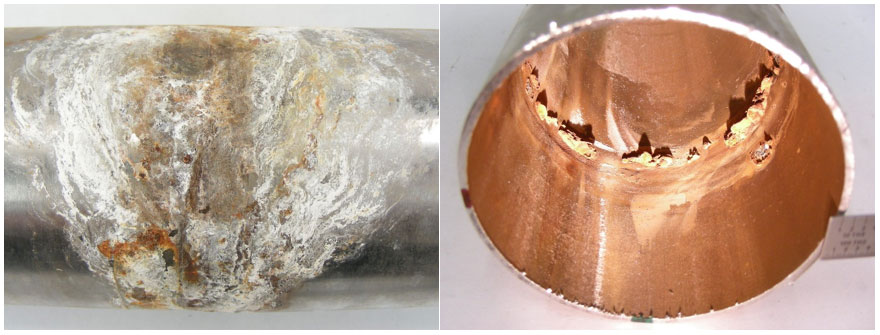Four horizontal pipes carrying chlorinated potable city water were submitted for analysis to determine the cause of hole formation, which has occurred in relatively new tubing in a newly-constructed area (about a year). The pipes were specified as 304 and 316 stainless steel used for product manufacturing.
Several tiny pinholes were barely visible near a circumferential butt weld. Thick tubercles were observed at the failure site as shown.


Sample 1, 2 and 3 failed due to microbiologically-induced corrosion (MIC). Metallographic results show that the pitting initiated from the ID. The pits were deep and narrow, like tunnels. This morphology is suggestive of microbiologically-influenced corrosion.
ID Deposit Analysis: The corrosion products contained constituents of the stainless steel tube (Fe, Cr, Ni). Relatively high carbon and sulfur point to the strong possibility that the wastage is from microbiological activity. Plus, a relatively high amount of soluble sulfate was detected, indicating the presence of sulfur-reducing bacteria (SRB). Carbon was likely from organic matter and acted as a nutrient for microbes. The by-products (hydrogen sulfides, tubercles, ammonia, organic and inorganic acids) released by the bacteria growth created favorable conditions for corrosion. Chloride anions cause pitting and SCC in austenitic stainless steels.

The pit was rounded, with an opening on the surface smaller than its size below the surface.

For more information email us at contact@davidnfrench.com or speak with us directly at 502-955-9847.